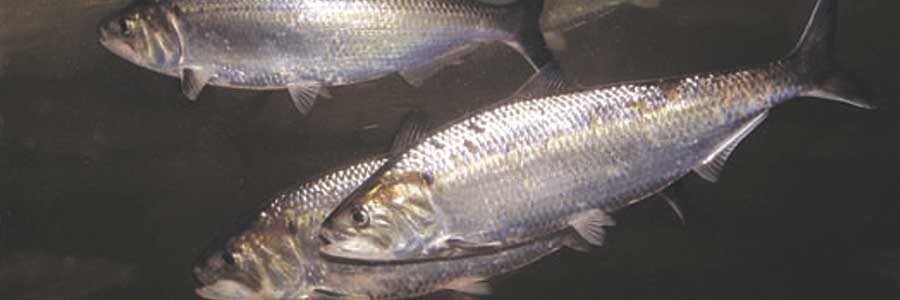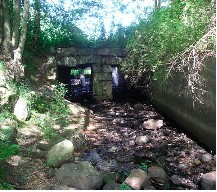The Problem:

For millennia literally millions of ocean fish such as blueback herring, alewife, shad and smelt came up practically every New England rivers and streams in the spring to spawn (lay their eggs). The fish were so plentiful that Native Americans and colonists not only ate them but spread them on their fields as fertilizer. Today, fish runs have entirely disappeared in many southeastern Massachusetts streams, and those remaining have a mere fraction of the fish they had previously.
The Causes:
1) Obsolete Dams.
Today there are 3,000 dams in Massachusetts, 606 of which are located in the southeastern part of the state. Most of these dams are relics of our mill industries, no longer have any human benefit and are causing untold harm. These obsolete dams slow down river flow, increase water temperature, concentrate pollutants, and reduce dissolved oxygen.

Massachusetts rivers are blocked by a dam every 1.2 miles, on average. These dams inhibit canoeing and kayaking by breaking up rivers and, when close to the coast, prevent boats from moving upstream from the ocean. When not well marked, they pose a serious danger to boaters. Stagnant water causes unsightly algae blooms that also impede boating and swimming.
Most dams in Massachusetts are well past their intended lifespan and impose some level of danger in extreme flooding situations. Repairing dams is a major expense, as is maintaining them indefinitely into the future.
2) In addition, inappropriate fishing methods at sea are wiping out river herring, which, while not the target, are caught as bycatch and discarded. Even though industrial trawlers are trying to catch entirely different species of fish, their nets are so huge (the size of a football field) that they can snare entire schools of river herring as bycatch, imperiling commercial and recreational fish (such as cod and striped bass) that depend on river herring for food.
The Solutions:
Restoration of fish runs is critical and would have a positive effect on the overall health and vitality of rivers and streams, extending the range of eagles, osprey, and other birds and sometimes recreating cold water trout streams.
In Massachusetts and elsewhere in New England successful efforts are being made to restore our fish runs.
 1) Removal of dams blocking fish runs. The best way to restore fish runs is to remove dams and other obstructions that are blocking their way. Most Massachusetts dams are old anyway, and no longer serve any purpose. Often people are living next to the ponds that the dams have created. Our experience tells us that homeowners are pleasantly surprised and dramatically impressed with the rivers that come alive when dams are removed.
1) Removal of dams blocking fish runs. The best way to restore fish runs is to remove dams and other obstructions that are blocking their way. Most Massachusetts dams are old anyway, and no longer serve any purpose. Often people are living next to the ponds that the dams have created. Our experience tells us that homeowners are pleasantly surprised and dramatically impressed with the rivers that come alive when dams are removed.
Six WAA member watershed organizations are working to remove dams that block fish passage (see sidebar in upper right side of this page). WAA provides the forum that allows these organizations to share their experiences and thus assist others in their individual efforts.
In addition, WAA continues to engage in public policy development on sustainable water resource management, on legislation such as the Sustainable Water Resources Act, which now makes dam removal much easier.
2) Alternatives to dam removal for restoring fish runs.
- Fish ladders and ramps are designed to get some adult fish species over dams in the spring and their offspring back to sea in the fall. While these can be successful in restoring fish runs for some species, they fall far short of restoring rivers for many species, including native fish, turtles, crayfish, eels and other species important to a healthy river system. Oddly, these devices sometimes work on one river while being rejected by the same fish species on a similar river, and biologists don’t know why. Nonetheless, if carefully designed for one or two anadromous fish species, they can be a viable alternative to dam removal.
- There have been successes in southeastern Massachusetts, including the fish ladder that gets herring around a dam on the Nemasket River (part of the Taunton River Watershed) in Middleboro, but ladders and ramps should be considered a temporary and limited option, where dam removal is not.
- Solving the Bycatch Problem. WAA has taken the lead in getting watershed associations throughout Massachusetts to press for measures to stop unnecessary bycatch of river herring at sea. Under pressure from us, as well as from small fishermen and others, the New England States Fisheries Council recently recommended that such measures be implemented by the National Marine Fisheries Service.
- A number of watershed associations in southeastern Massachusetts have joined small commercial fishermen and those who fish for sport in The Herring Alliance. This organization is working for more far-sighted fishing methods that would eliminate or greatly reduce river herring bycatch at sea.
